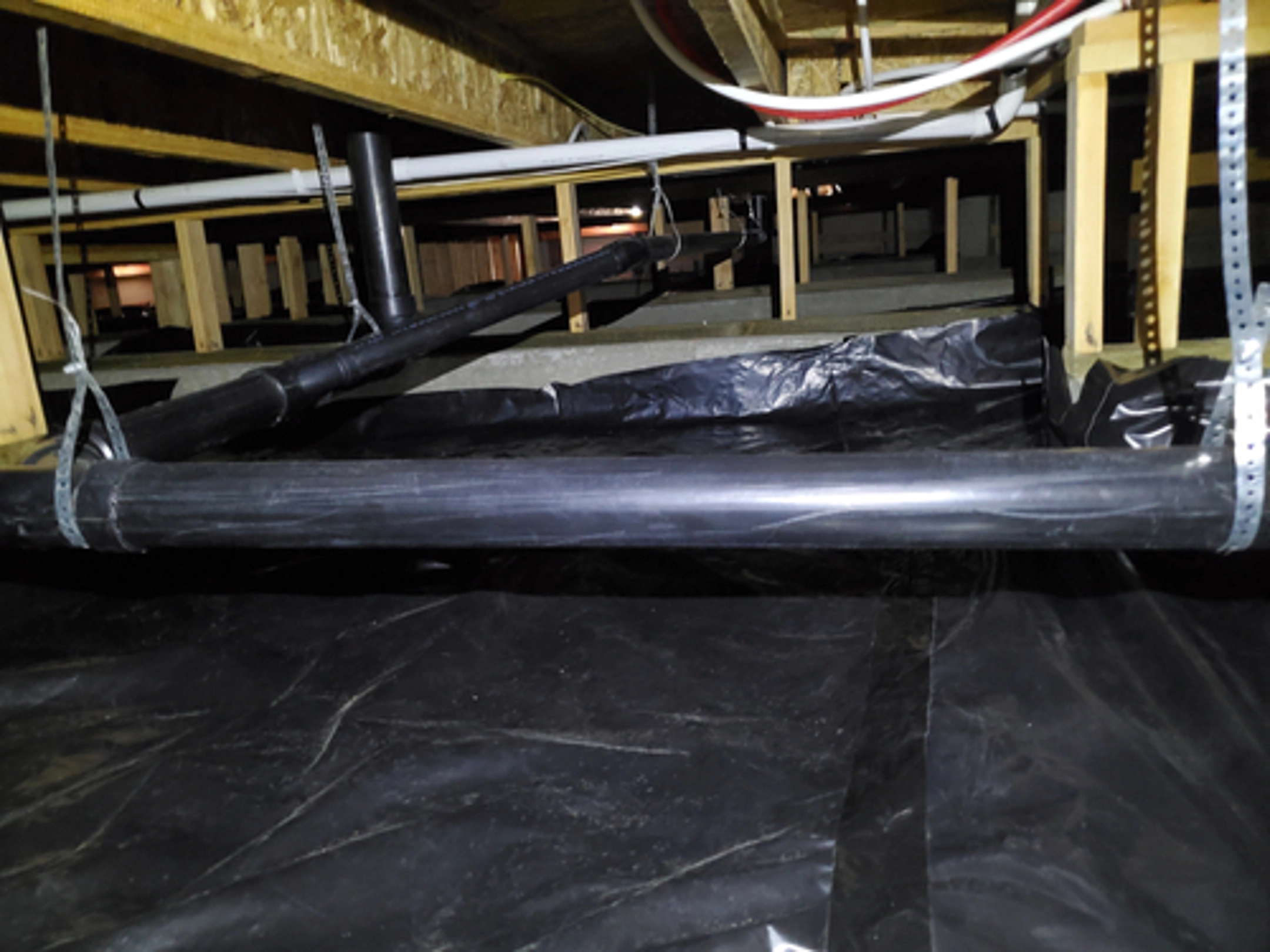
Slab foundations and crawlspaces are commonly found in homes across the country, but what exactly is the difference? Where are they most common? What makes the most sense for your property? And ultimately, how do they function in severe weather or affect your home? In the end, the type of foundation you have typically depends on where you are located and your style of home.
What is a Crawlspace?
Architectural Digest defines a crawlspace as “a small room beneath the main floor of a home but it is not a full basement.” Crawlspaces usually have solid walls and (as the name indicates) don’t allow room for standing. At most, they are typically no taller than 5 feet. They are frequently used in urban areas, and locations prone to flooding. (This is because they “lift” the first floor off ground level, raising critical systems such as wiring, HVAC systems, and plumbing pipes above potential flood levels.) In other words, as FEMA notes, crawlspaces tend to be in Special Flood Hazard Areas (SFHAs) above the Base Flood Elevation (BFE).
Are There Different Types of Crawlspaces?
The National Association of Home Builders states there are two primary types of crawlspace foundations: block-and-base, and pier-and-beam.
Anchor Foundation Repair provides the following definitions for block-and-base, and pier-and-beam foundations:
A pier-and-beam crawlspace foundation “will have a continuous, ground-penetrating concrete or masonry beam that supports the full perimeter of the house.”
Conversely, a block-and-base crawlspace foundation does not have this beam around the perimeter. While they have “the same type of free-standing piers along the perimeter that are used under the middle of the home,” this type of crawlspace foundation tends to have non-weight bearing skirting around the perimeter, which can be removed. (Or, it might not have a perimeter covering at all.)
Additionally, Architectural Digest outlines three overall kinds of crawlspaces: actively vented, passively vented, and conditioned (or encapsulated).
- Actively Vented. In this type of crawlspace, vents and fans let air circulate easily. They are often used in areas where the outside humidity is not very high.
- Passively Vented. This type of crawlspace uses natural airflow to help with moisture and air quality. They tend to be used in areas with low humidity levels and moderate climates.
- Conditioned (Encapsulated). As the name indicates, this type of crawlspace is insulated and sealed, often used in places with extreme temperatures and high humidity.
What is a Slab Foundation?
The National Association of Home Builders define a slab when “Concrete is poured four to eight inches deep on a level surface with thicker concrete around the perimeter.”
Slab foundations are often found in warmer climates since they can crack if exposed to cold temperatures. Additionally, slab foundations often add a layer of crushed gravel or sand beneath the concrete to assist with drainage.
Pros and Cons of Crawlspaces
Some pros of crawlspaces include:
- Actively vented crawlspaces can help cool the area beneath your home.
- Conditioned/encapsulated crawlspaces can help improve indoor air quality, preventing or minimizing contaminants and allergens from entering your home.
- Conditioned/encapsulated crawlspaces can assist with moisture and temperature control.
- They provide storage space.
- They protect utilities (you can easily access plumbing and other pipes).
- They are ideal for sloped lots.
However, there are also cons:
- They tend to be more expensive than slabs.
- They tend to require more maintenance and monitoring than slabs to help ensure proper ventilation.
- They tend to have a shorter lifespan than slabs.
- Actively vented crawlspaces might attract bugs and other pests.
- There may be moisture issues depending on the type you use.
- Your living space may become smaller by adding a crawlspace.
- Passively vented crawlspaces might not be very effective in flood-prone areas when it comes to reducing moisture.
Pros and Cons of Slabs
The National Association of Home Builders and Investopedia detail various pros and cons of slabs.
Some positive elements of slabs include:
- They have a long lifespan.
- They are resistant to mold, mildew, and pest damage.
- They are durable.
- They are typically less expensive than crawlspaces.
- They can be constructed in a short time frame.
- There is less risk of flood damage or gas leaking into your property.
Some potential downsides of slabs are:
- They can’t be built on a slope.
- There is no extra space beneath them since they are built directly on the ground. (Often, pipes and other critical elements are built directly into the slab itself.)
- They can crack.
- Pests can enter through the walls since the house is closer to the ground than with a crawlspace.
- Heating and cooling units need placed in an aboveground space, taking up room.
SERVPRO® is Here to Help® with Slab and Crawlspace Cleanup 24/7
Whether you have a slab foundation or crawlspace, your home is more than just brick and mortar. Precious memories and materials are irreplaceable, and frequently stored in crawlspaces to stay away from heavy traffic upstairs. If your crawlspace, storage area, or slab foundation suffers damage and requires cleanup and restoration after a fire, flood damage, other severe weather event, or more, SERVPRO is here to help with 24-hour emergency services.
There are 2300 SERVPRO locations in the United States and Canada, so no matter where you live, there is a franchise nearby, ready to assist you with any size cleaning, remediation, or reconstruction service, if needed. We also offer services such as document restoration and deodorization to assist with recovery and remediating crawlspace storage and special documents. We are faster to any size disaster and look forward to returning your home to pre-loss condition, making it “Like it never even happened.” Contact your local SERVPRO anytime.
To learn more about SERVPRO and the cleanup and restoration industry, please visit our FAQ and Glossary.